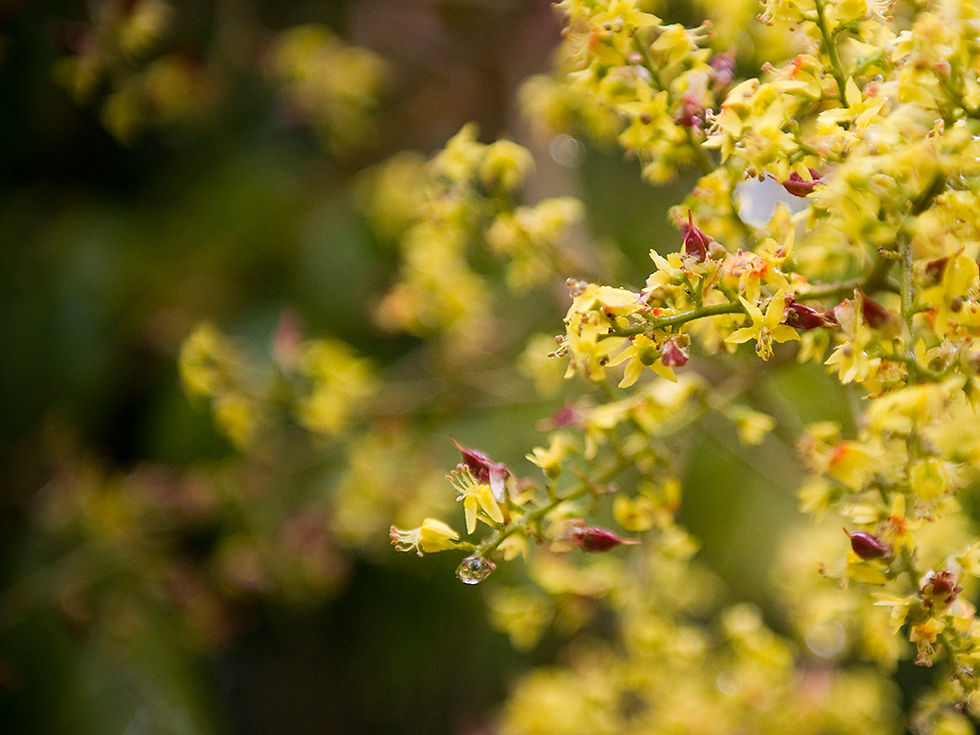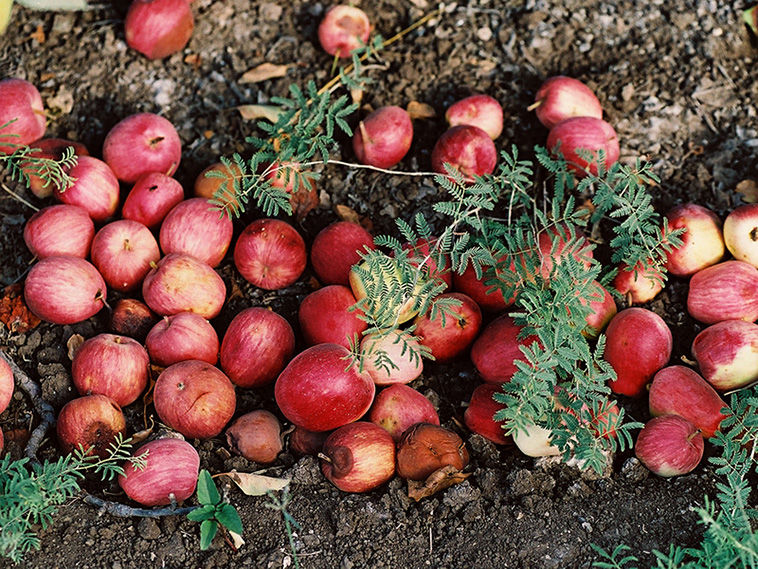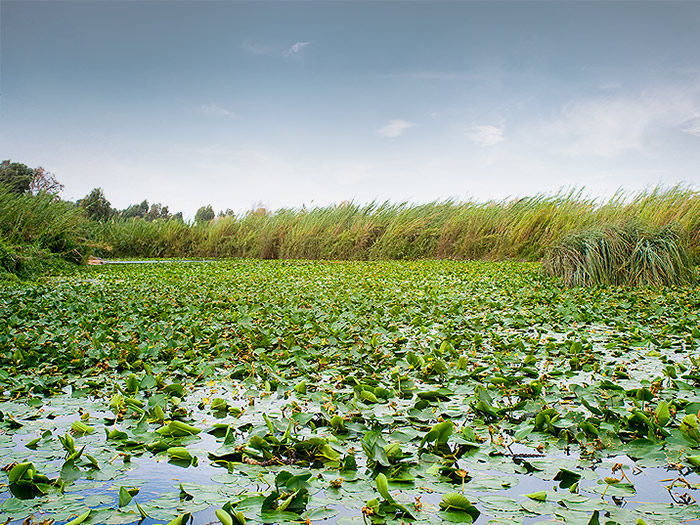Mediterranean Sea – A Cultural Unifier Lake in cycles
- Dr. Aly Raafat
- Jan 19, 2014
- 11 min read

Mediterranean architecture moves in cycles like all cultural ones from growth, maturity, decay to rebirth, under unifying political, ecological, and economic influences. Politically there were always tendencies for big Mediterranean powers to spread their influences from north to south and from east to west and vice-versa.
Between Egypt and neighboring countries around the Mediterranean, there were several directional movements. The three old civilizations - Egyptian Greek and Roman - saw the spread of political and social demographic influences resulting in emergence of new cultures of mixed features in religious, artistic and social aspects. Architecturally the Greeks spread their classic style which is the Mediterranean one par excellence. White marble or white wash masses, colonnades, porches, vertical windows, porticos, varandas with cast iron or brick parapets with evergreen trees and flower boxes are most common for Mediterranean Landscape. Later Greek classic architecture was mixed with Egyptian one in late Ptolemaic cycle. It extended by conquest to Eastern Mediterranean and Persia. Roman Empire was the first experience in globalization in form of growing and falling Empires, as occupiers and developers. Many citizens of countries they occupied were granted Roman nationality. Roman architecture flourished all over North Africa and Syria turning to Byzantine architecture in Asia Minor.
Later Islam - with humble origins, strict rules against idolatry and respect of privacy - was recepective to ideas and inspirations of other more developed civilizations. The new religion, moving northward, was influenced by Syrian, Byzantine and later by Eastern Europe to develop a very distinct abstract art and architecture. It reached its rational and romantic balanced climax in Andalusia presenting a milestone of both East and West in a very significant art and architecture. It stood, in the world history, as highlight in the marriage of abstract art with distinct architecture and the intellect with human feelings of beauty and sublimity.
There were always two ways attraction between Egypt and Europe - France in particular - exchanging visitors and specialists; to name French Historian Gustave Flaubert and architect Pascal-Xavier Coste. Napoleon brought with his French expedition (1798-1801) the rule of law and order to Egyptian administration and city planning. The French expedition attracted the Egyptians' attention to their country's geographical and historical significance as well as to the cultural gap between it and other European countries. It started the era of westernization of Egypt after centuries of isolation, by demolishing "Harats" to clear space for relatively large straight streets with shops and trees on both sides. Boulaq Street (26 of July) and later Kalaa Sreet (Mohamed Aly) were two of such projects. They started to dry up El-Azbakiya lake to provide space for French residences and establish the base for a highly contrasting new city west of the Fatimid one. On return of Napoleon from his short lived conquest, Egyptomania - as a Romantic movement - spread over Paris in art and architecture. It showed up in statues in fountains, palaces (Le Palais Egyptien), squares (Place de la Concorde) with obelisks.
Earlier Greek culture returned, by way of Islamic scholars back to Europe to bring about its Renaissance. After receding in the 15th Century Islamic culture returned back to Mediterranean Europe via the Ottoman Empire. Architecturally, on moving southward in Syria and North African they used Byzantine and Islamic vocabulary to replace Mamluk one. The caliphs moved by conquest westward to Eastern Europe in Balkan region, Hungary, and Bulgaria to show up in different versions of mosques, madrasas, khans and others.
Turkish Islamic components were mixed in their late romantic phase in Topkapi and Dolmabahce palaces, with European Baroque in classical excessive decorations and motives. Its version in Albania - in what was called Rumi Style - the eastern version of European Baroque - was brought over by Albanian ruler Mohamed Aly to Egypt to prevail in palaces (Shoubra) till the second half of the nineteenth century and replaced later by neo-classical styles. Mohamed Aly wanted his palace in Shoubra to be a small Versailles so he commissioned the Italian architect Pascal Coste – graduate of the Ecole des Beaux-Arts de Paris - for this purpose. Irregular ground plans, large vertically elongated windows, gabled roofs, wide curvilinear cantilevered canopies and hoods carried by classic columns, were its main features.
Cultural relations between Egypt and Europe increased in modern times by frequent and easier by sea or air crossings of the Mediterranean by orientalists and discoverers. Among these Carter, Champolion and Marriot were the most influential. Egyptian scholars were sent by Mohamed Aly and his successors as missions to bring back the new intellectual movements as in case of Refa’a El-Tahtawy, Taha Hussein, Mohamed Farid and hundred others.
Personal friendships between rulers on both sides of the Mediterranean - as in case of Khedive Isma'il, Napoleon III and Queen Josephine - were very influential in bringing - western city planning and architecture, to down town Cairo in what was known as Isma'iliya district. Barillet-Deschamps, who designed the Bois de Boulogne and the Champs de Mars in Paris, was invited together with the French horticulturist Delchevalerie to create a typical French pleasure garden at Azbakiya after earlier drying up its lake.
The opening of Suez Canal during Isma'il's rule had a dramatic effect on world trade as well as on architects, architecture, planning and urban ambitions transferred from Europe and Asia to Africa. European architects designed the new Egyptian capital and ports as replicas of Paris and Marseilles. The same trend continued during the rule of Khedive Tawfik and his successors. They were influenced by personal travels, studies, tendencies and inspirations. Tawfik continued Isma'iliya district as a high quality western urban venture full of Neo-Baroque, Victorian Gothic, Art Nouveau, Art Deco, and later neo classic buildings. Many architects of Mediterranean origin – Edwin Pasty, G. Garozzo, Alfonso Manescalo and others, came over to participate in such westernization of new Cairo. The Italian architect Lasciac (1856-1946) was one of the most active European architects in Cairo who worked in Egypt from 1882 to 1936, and was the chief architect of the Khedivian palaces between 1907 and 1917. Mario Rossi was another Italian architect who worked for the Ministry of Awqaf and designed some of its mosques in the 1940s in Cairo and Alexandria.
Romantic cycle, as the motto of feelings, created ambitious western Cairo full of boulevards, music kiosks, grand squares, gardens with lakes, arcades, river Nile fronts, department stores, and apartment buildings. The romantic trends of the second half of the Nineteenth century as in eclecticism, polychromy, fondness of decorations, schism between architecture and construction formed criterias for the variety of styles. However the last result was general harmony in skylines, textures, forms and interests in quality and artistic manifestations.
Egyptian ports as Alexandria and Port Said witnessed the atmosphere of a cosmopolitan multi-nationals living together in harmony. They all had a large percentage of Greeks, Italians, Cypriots, Maltese, French, Spanish, Syrians and Lebanese Etc. The Egyptian ports are typical Mediterranean palm lined corniches with white sand beaches, flat and hilly bays, cabanas, marinas, fisheries and seaside restaurants with extended covered or open terraces. Their architecture adopted Mediterranean ports style in Venetian (photo), neo-Romanesque, Victorian, Renaissance and Neo-Baroque and Neo-Classic French styles. These are mixed with Islamic flavor to create a new eclectic style peculiar to Egyptian geography being a meeting place between east and west. These buildings served as international banks, clubs, theaters, cultural centers, casinos, cinemas, art galleries. Rashid, Damietta, and Port Said after Suez Canal opening increased in importance and took special local flavors. Rashid houses were constructed in multistorey brick and wood, Port Said ones were provided with Turkish inspired wooden loggias with decorated parapets (photo).
The most important unifying factors are the ecological and geological ones. Mediterranean weather is mild with ever shining sun permitting group outdoor living. Such life will create tight sociable families with strong romantic ties. They express their feelings in gatherings in patios, terraces, balconies, arcades, and arcuated colonnades in front of white walls and gently gabled terracotta roofs. Mediterranean relatively humid weather encourages green solutions with porous or double skined walls, pergolas, colonnades, patios, wind catchers in windows and towers. These constitute architectural elements all over Mediterranean regions and history. They have been a dominant factor from Greco–Roman classic architecture to contemporary one in Le Corbusier's hands. The latter was influenced in these designs by the six weeks he spent on the Acropolis recording minute observations in drawings for the formal Architecture of the Parthenon and the informality of Greek island architecture.
Mediterraneans share all around the sea romantic ways of behavior in songs, art works, literature, and even body and hand gestures. They even share looks of cornich and beach side walks with singing and dancing circles, art work exhibitions, street pedlers, fortune tellers, palm readers, coffee shops with nargilas, seafood resturants with large outdoor terraces and gardens competing for passing by customers by attractive programs and prices.
Technologically construction materials distinguished Mediterranean architecture from others. Masonry, as a prevailing material in the region whether in sand or limestone forms, showed up in post and lintel Pharonic architecture and in marble in Greek one. Concrete core and mud-brick covered with marble as an outer skin showed up in arcuated architecture all over the Roman Empire. These white or colored stone walls with arcades, terracotta shingles and gently gabled roofs produced what became to be known as the typical Mediterranean architecture.
European Mediterranean countries moved swiftly towards revolutionary construction in the turn of the Nineteenth century with the rediscovery of Roman concrete and invention of cement and iron and later reinforced concrete.
With mechanical and biological nineteenth century revolutions, a new social commercial and industrial life demanded new building types. Wide spans in steel, reinforced concrete, and glass appeared in exhibition halls, market halls, railway stations, green glass houses and high-rise office buildings. These buildings in the late nineteenth century romantic period were given traditional dresses.
With the construction of Railways in Mohamed Sa'id Pasha's rule steel hangars were needed. They were constructed in Islamic style in the North (Misr railway station), Pharonic in the South (Giza). Alexandria railway station - being a cosmopolitan city - was exempted and designed in Mediterranean classic style.
Newly emerging social, technological, economic, and artistic preferences produced a new cycle of architectural form. Basic geometric forms were the answer. Modern movement produced cubistic forms in what was known as the International Style, in the hands of French architect Le Corbusier and Egyptian architect Dr. Sayed Karim and many others. Light brick, plastered cement walls and glass curtain walls - replacing heavy expensive stone work - constitute the outer skin of basic geometric concrete or steel skeletons forming the rational version of International Mediterranean modernism.
The latter - being an extension of classic simplicity, rhythms and clean skyline - took roots in and around the Mediterranean after its birth in mechanistic environment in Germany and Belgium. It developed - in parallel with Mediterranean classic geometric basic forms - to satisfy post-first world war economic necessities and newly emerging artistic preferences. For such reasons it spread smoothly in southern France, Italy, Greece, Spain and North Africa.
However some newly emerging Egyptian architects continued to work with modernized local Islamic and Classic vocabulary. Famous among these were Beaux-arts and Liverpool graduates, Mostafa Pasha Fahmy, Shafey brothers, Aly Labib Gabr, are just a few.
As expected by the natural turn of architectural cycles, Mediterranean Architecture moved in mid Twentieth century towards humanism led strangely enough by the functionalist Le Corbusier and followed by others in what became known as Late-Modernism. This showed up in Brutal concrete works in housing complexes in Marseilles and Nimes and new plastic forms in Notre Dame-du-Haut in Ronchamp. These are but few examples among many. With the curve of romanticism rising again in the last third of the Twentieth Century, Mediterranean Architects as others returned back to their classic Greco–Roman Egyptian roots in what was called by Charles Jencks Post–Modernism.
There was a natural tendency for Mediterranean romantics to go back to traditional architecture. This period moved architecture towards romantic revivals in forms of Classic or Islamic malls, hotels, academies and public buildings all around the Mediterranean. This period saw the rebirth of new classic pharonic and Islamic architecture .It witnessed the emergence of Islamic architecture in mosques in Rome and in the Balkan Region.
On the turn of the Millennium a newly emerging world awareness of the catastrophic effect of mechanization in industry and construction on mother earth, brought International rules and limitations. Mediterranean countries were cooperative in helpless trials to save the world by reducing energy consumption producing harmful gases causing green house effects and increase in U.V harmful rays.
This consciousness together with the biological awareness, created organic tendencies in architecture. The new cycle of contextualism promises the environmentally conscious region great expectations. Interactively, the Mediterranean region is rich in green architecture tradition returned back to inner courts, sun breakers, pergolas, double – layer outer skin, thick white walls with bright colored shutterings, water – pools and fountains, green shrubberies and thick trees. This could be complemented by intelligent architecture using digital controls of services with respect of outside natural weather conditions and measured human comfort zones. Organic architecture spread as an approach to keep up with human demands for comfort with the least of energy consumption. Mediterranean people as most of others went to solutions and natural or biological forms to harmonize graphically with forms of the new global environmental architectural cycle.
Metaphorically, organic curvilinear free forms started as a trend in the turn of the Nineteenth century in building profiles, traditional decorative fences, doors, windows, wall and ceiling decorations. All over the Mediterranean art, sweeping organic lines in sea and land plants form unparallel swinging lines in a very distinctive decorative form to replace classic repetitive geometric moldings. The Art Nouveau designer was fascinated by the external appearance of natural – biomorphic and zoomorphic- forms. This focusing on nature represented a promising development for architects and other artists seeking a way out of the rigidity of Historicism.
This new organic metaphor spread all over, around the turn of last century, in windows, lamp chandeliers. These were executed in iron, gypsum, wood and decorative coloured glass. It showed up in abstract natural sweeping forms in Germany, Austria and Italy where it was known as Liberty Style. In Spain this movement was known as the "Modernismo". In Belgium and France it was known as Art Nouveau. Its examples are all over high and low income houses in Shoubra, Abbasiya, Helmia and down town Cairo. In Alexandria one finds it in iron works in doorways, windows of private villas, apartment buildings, restaurants and hotels.
Later biologic tendencies developed from free to geometric abstract forms to Art Deco movement showing up on facades and interiors of Apartment buildings, banks and clubs. Its forms included stylized bouquets of flowers, young maidens, and geometric patterns such as zigzags, chevrons, and lighting bolts. It spread in decorative art works in posters, doors, elevators doors, decorative ceilings and wall panels. It became a trademark for the first third of the twentieth century outside of the modernistic International Style. Art Deco was very much influenced by Egyptology, the orient and tribal Africa.
Mediterranean Architecture in the Twenty First century is entering the stage of environmental awareness accompanied by electronic revolution, producing new architectural hybrid non-traditional forms. Interactive contextual and formal metaphoric approaches and their influence on emerging architectural forms are preliminary phases of current new environmental architectural cycle.
Mediterranean architects are very receptive to their hospitable nature and environment. They naturally followed and will follow trends in International environmental cycle. Works of Spanish architect Gaudi were a prediction of this movement in the start of the Twentieth century.
In a strong desire to harmonize with nature they followed hybrid and zoomorphic tendencies as in works of Jean Nouvel in Paris and Lisbon, Bailey in children cancer hospital in Cairo, Gehry in Barcelona's fish, furniture exhibitions by Fuksas and Dar El-Gomhourya by the author in Cairo. The work of Calatrava in Valencia (City of Arts and Science), and Philippe Stark are unique in this direction in furniture, tools and architecture. Works of blobs initiated by Le Corbusier as usual continued in Jacob and Mac Farlain Pompidou Centre in Paris, and in Nox entry in competition of Alice in Wonderland in Italy. English architect Norman Foster adopted the same direction in his designs in Serrenia village in Egypt.
The world is getting smaller by globalization and the Mediterranean is becoming a lake surrounded by people of different backgrounds who cannot survive but by living in harmony and coexistence with each other and with nature.








































Comments